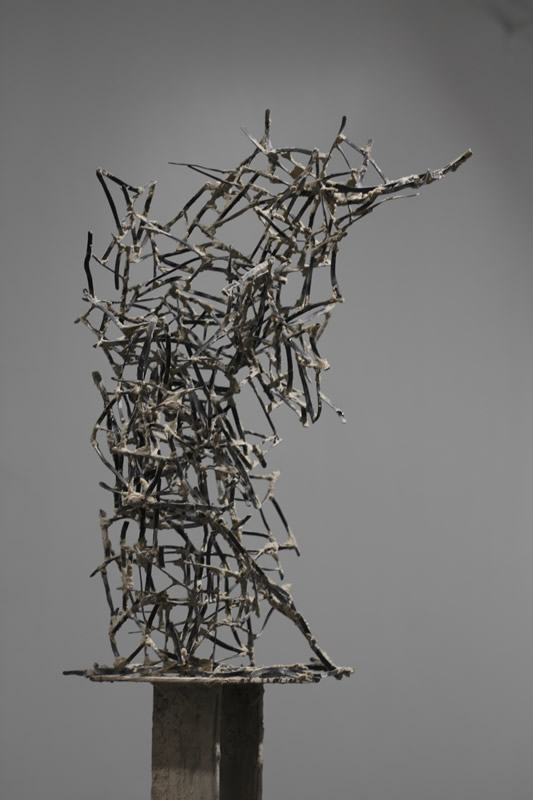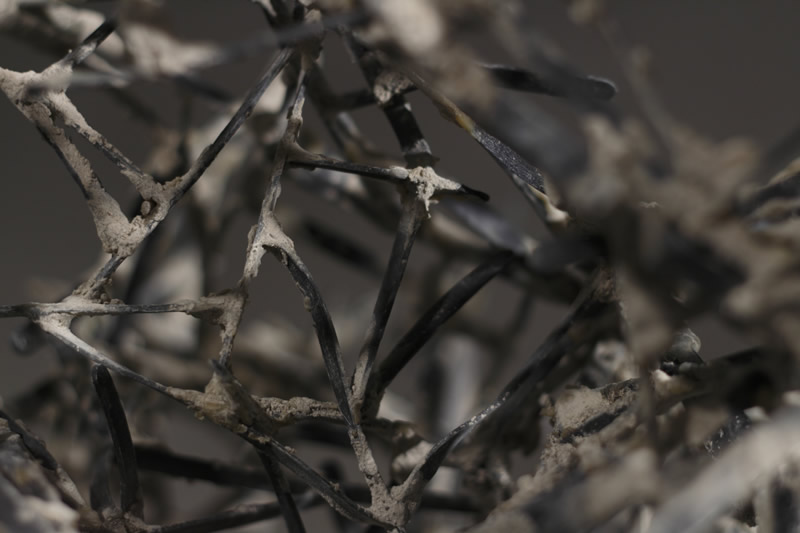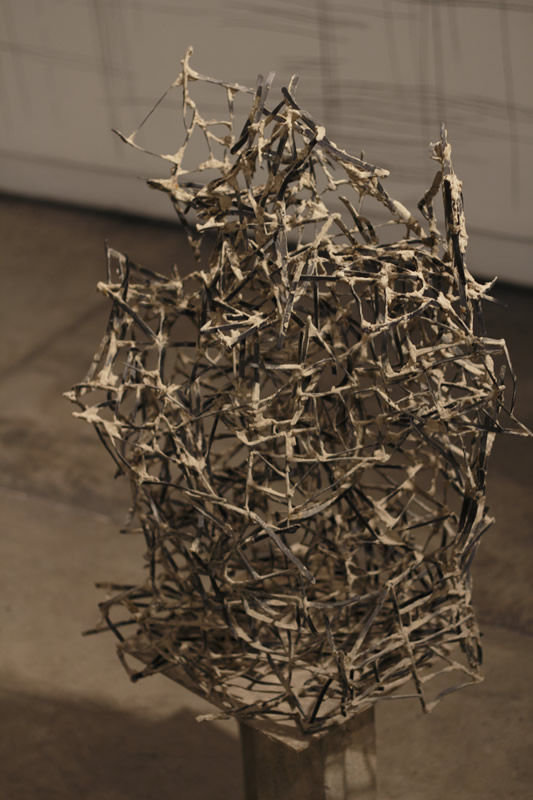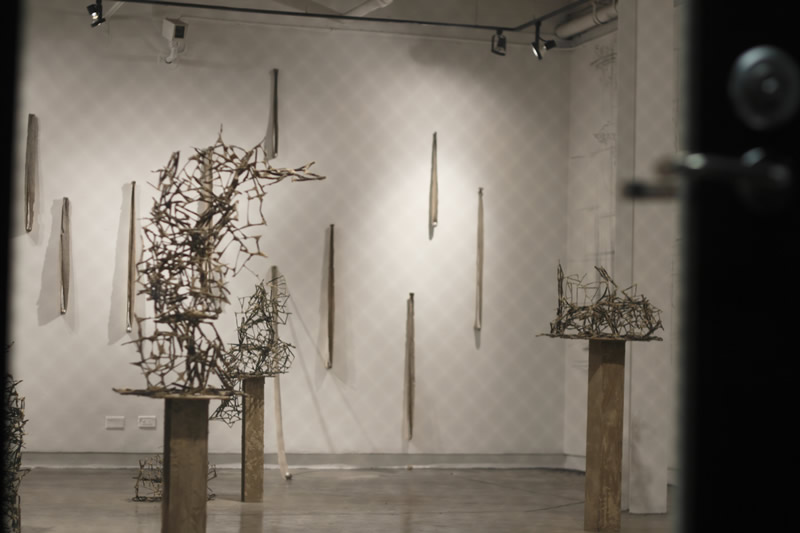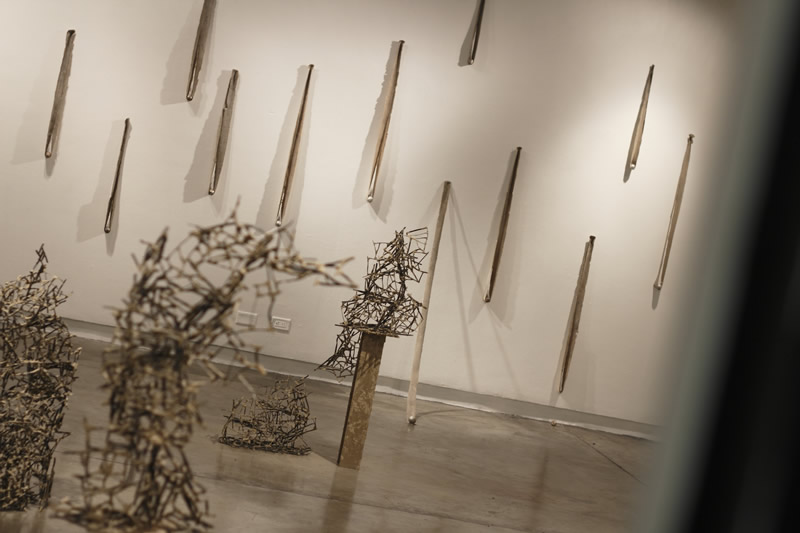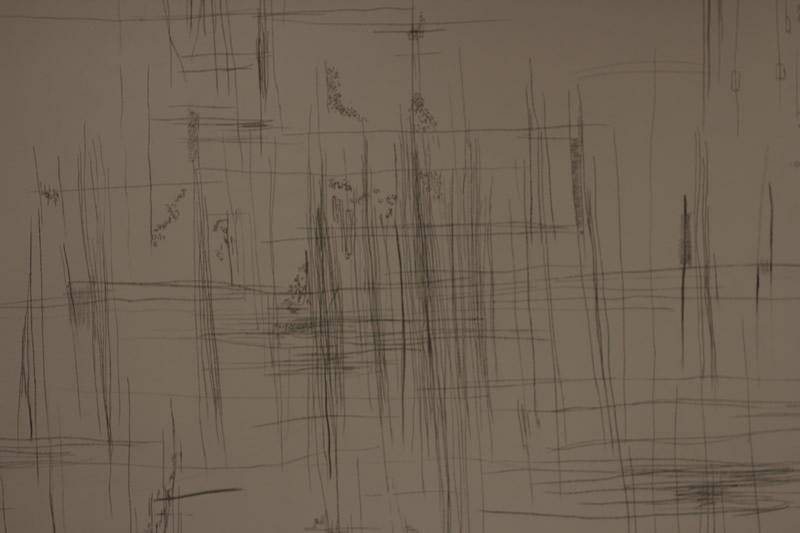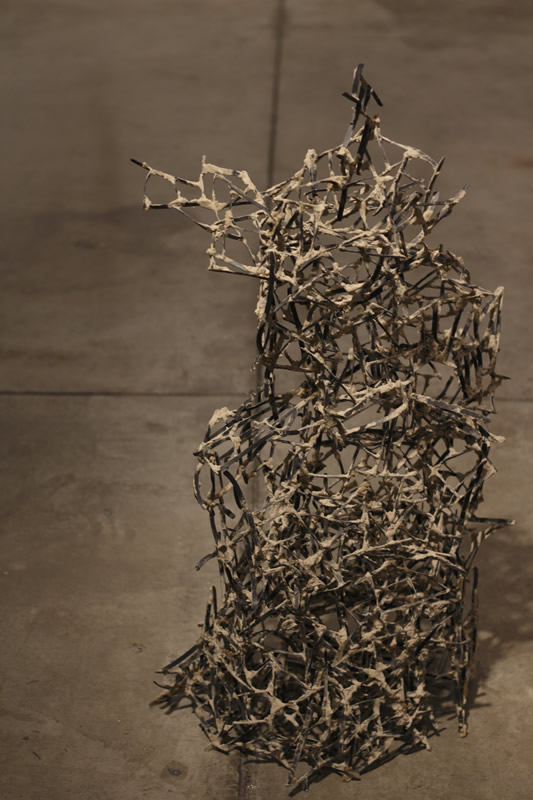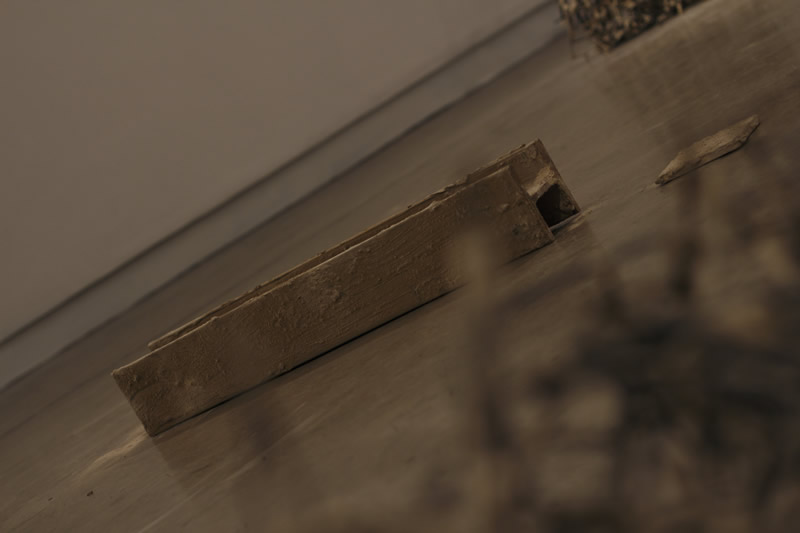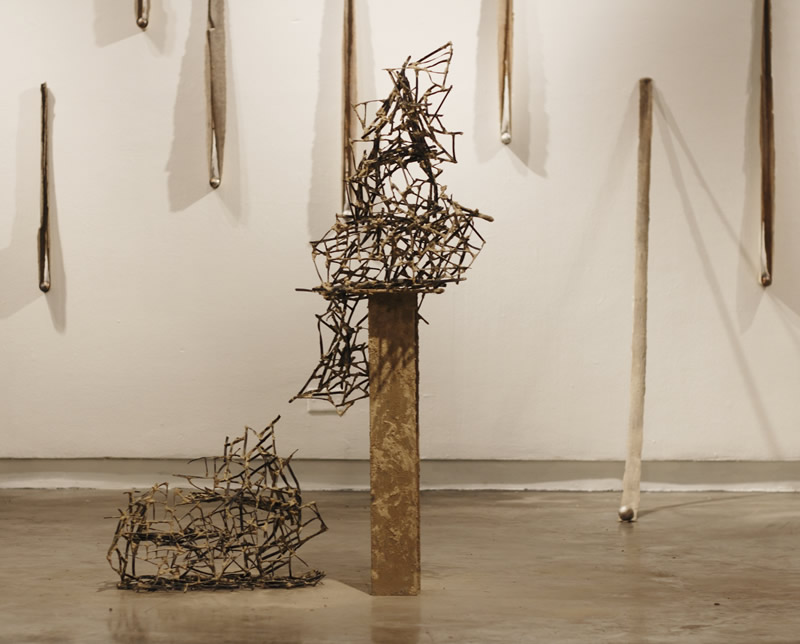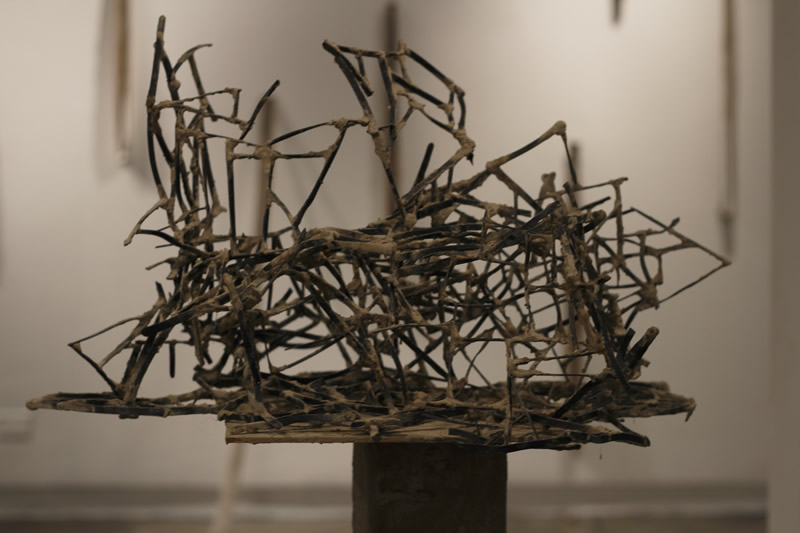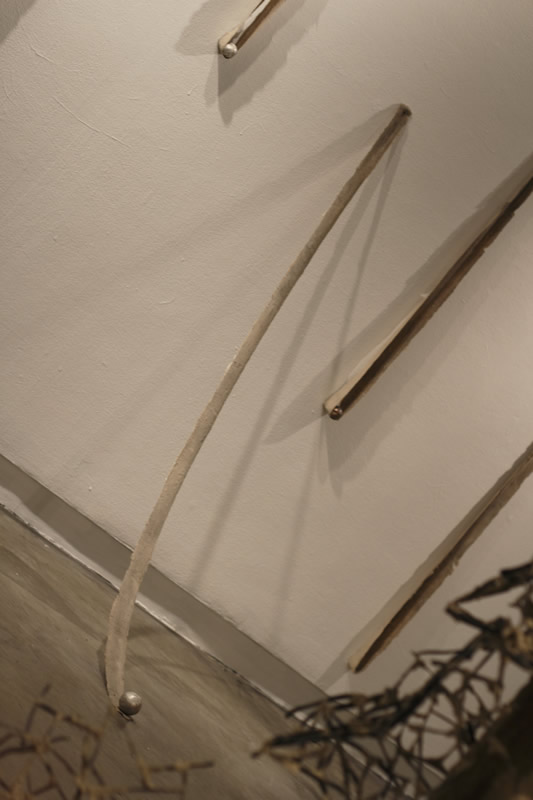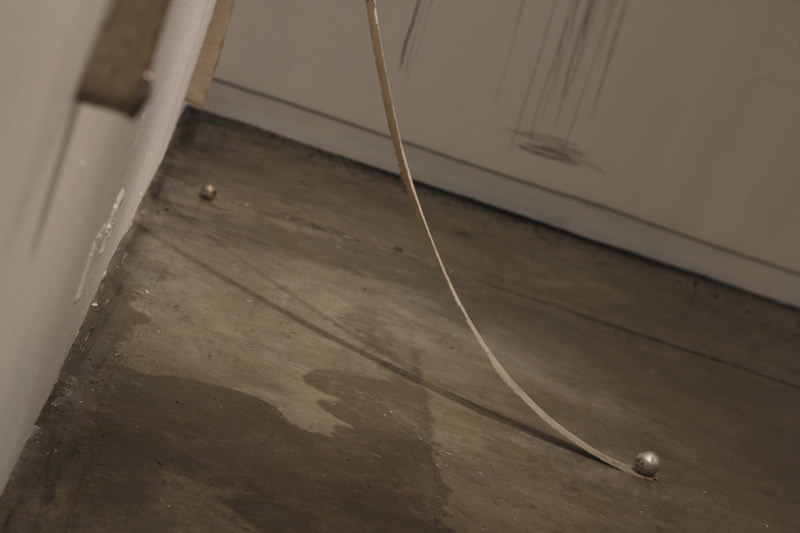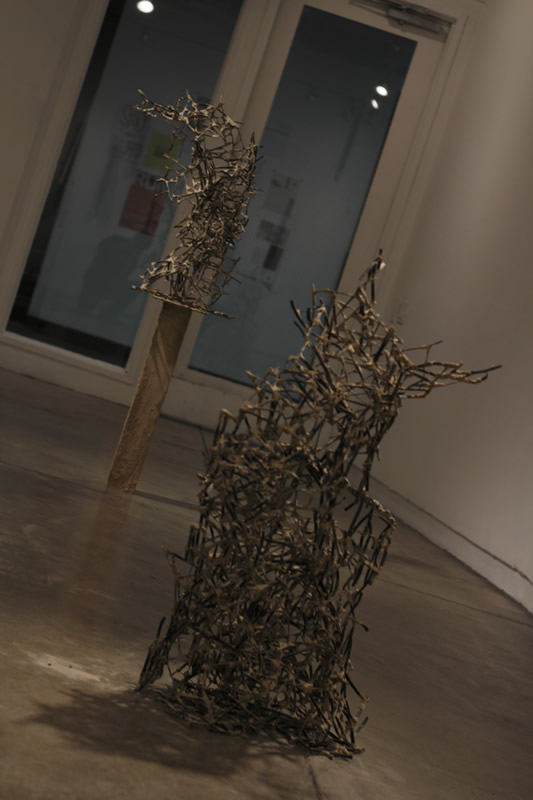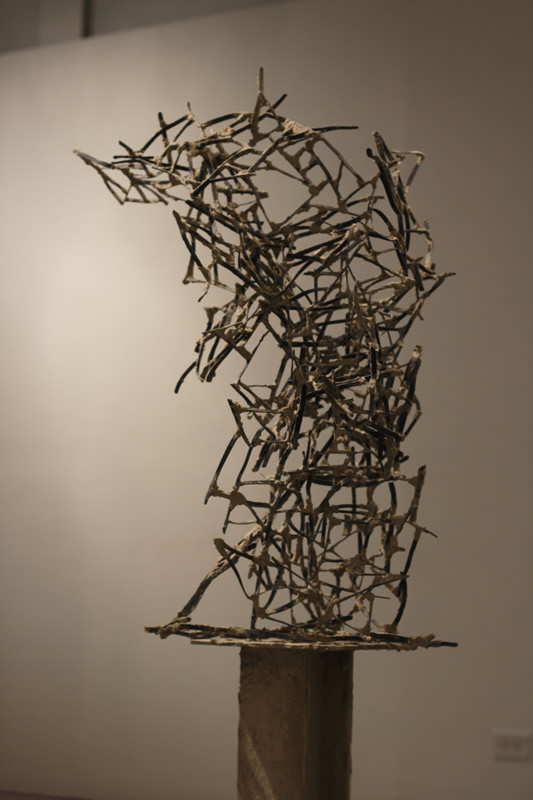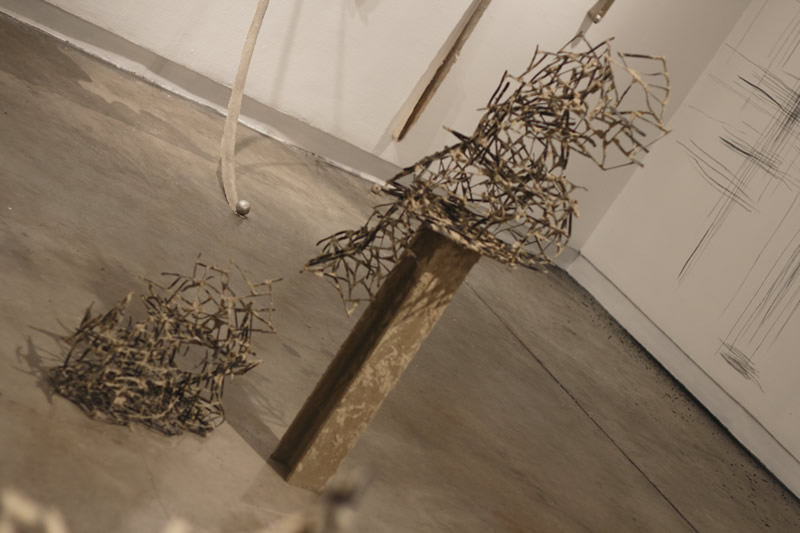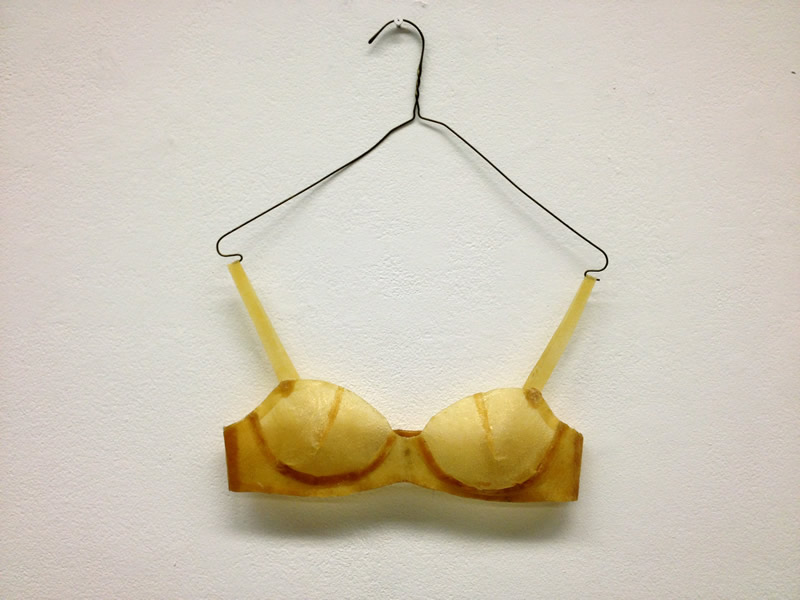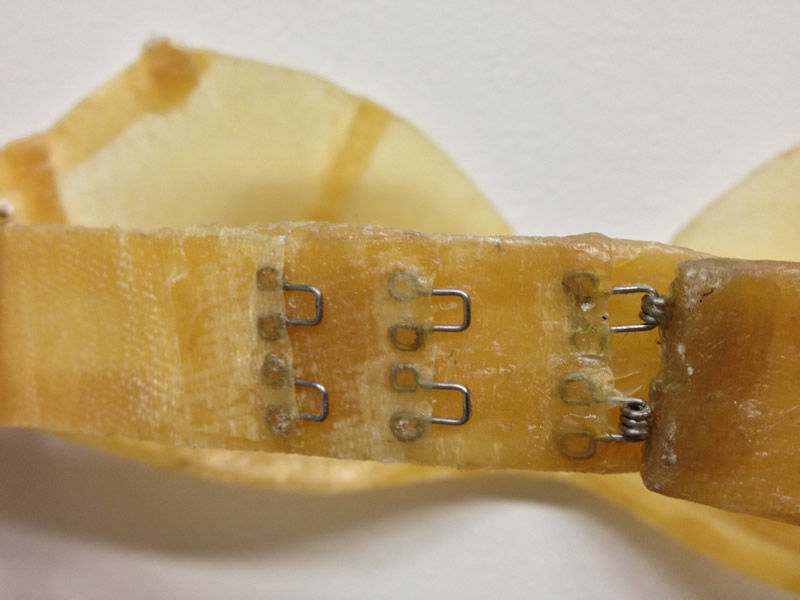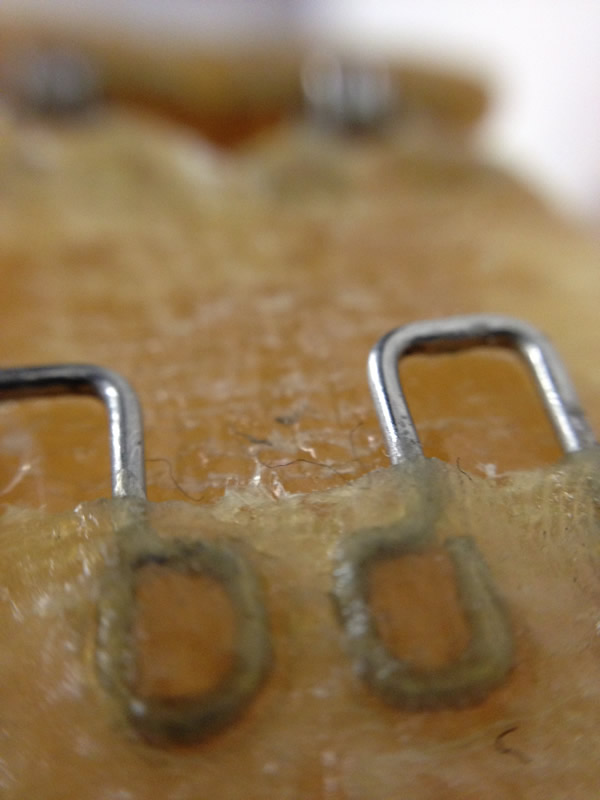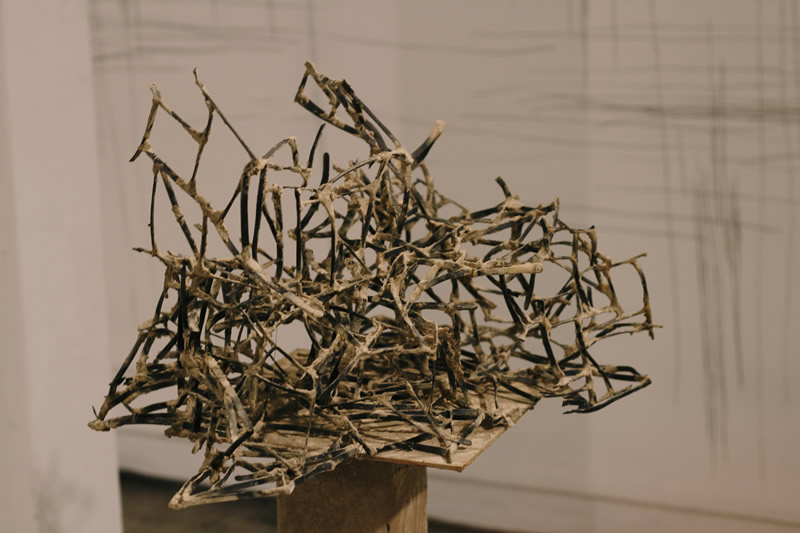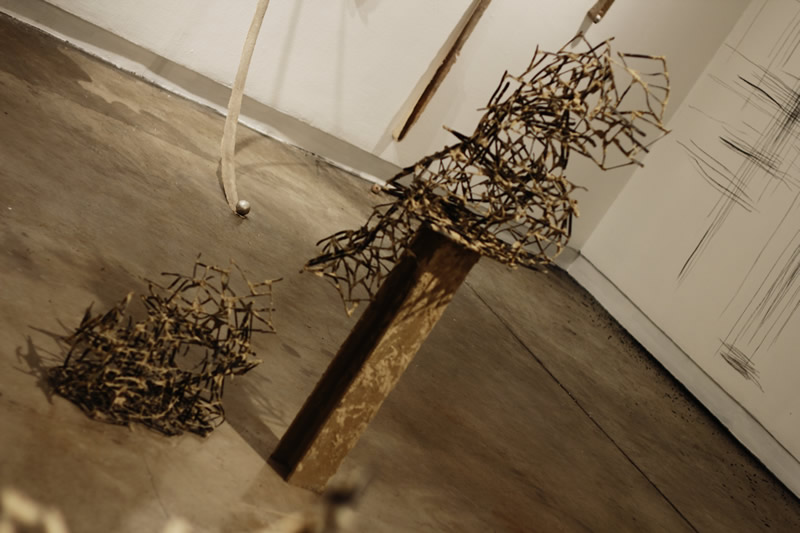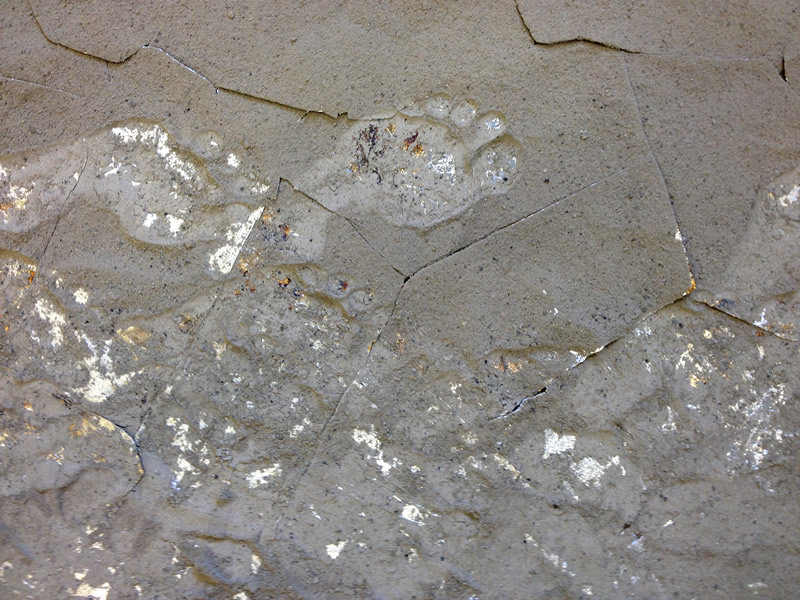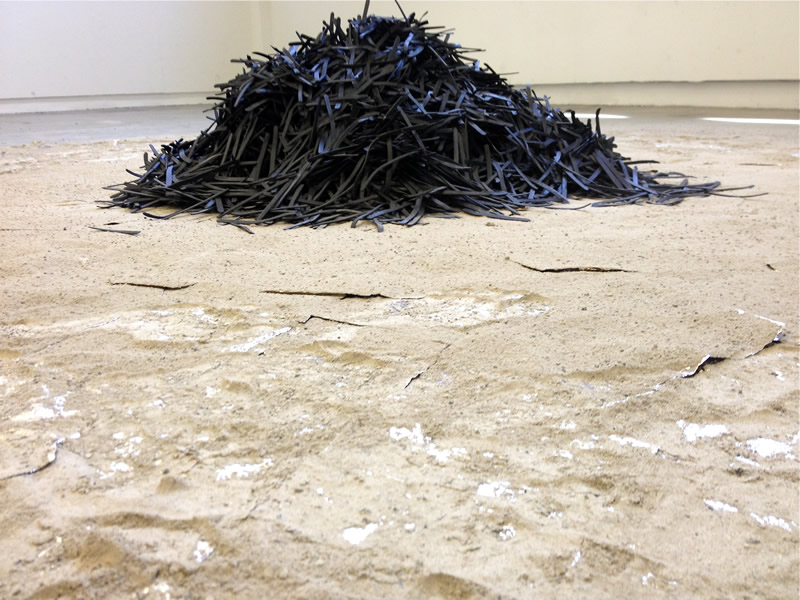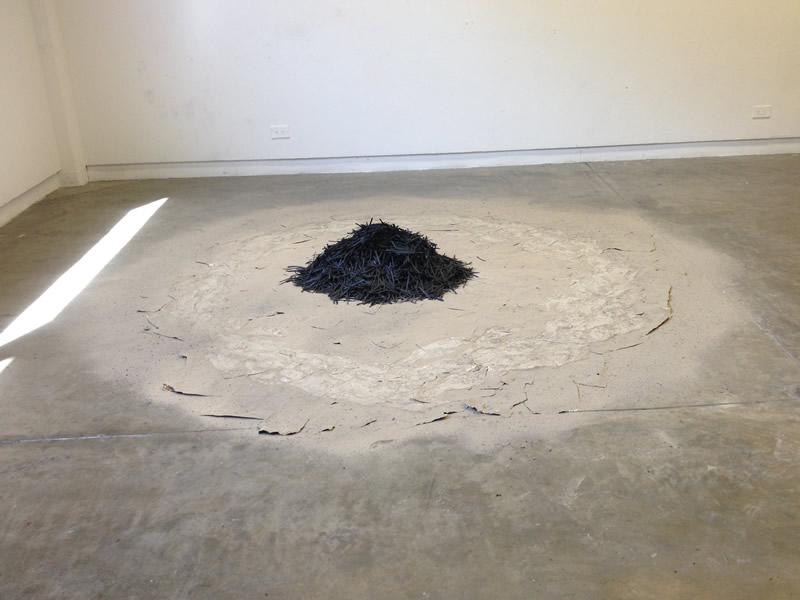This is the first in a new series of first-person pieces by Fine Art students reflecting on the ideas informing their work. Each post will feature the artist whose work is currently rotating through the Undergraduate Fine Art Student Gallery, at the Hillside Campus. This week, student Joanna Bassi unveils the sources of inspiration behind her striking collection of sculptures made from charcoal, beeswax and ash, entitled, “Hallowed Degeneration.”
My show is an abstraction of a single process, the ritual of making charcoal. The three main elements that I harness and reform are tinfoil, charcoal and ash. I see these as representations of a before, middle, and after. The tinfoil cocoons the wood allowing it to transform into its carbon stage, and the ash is a result of the burn.
I have an appreciation of the materials and the byproducts created through the process of making charcoal. In some cases, the ash becomes more precious then the charcoal. The materials and leftovers are recycled back into the body of work. I have a deep interest in deconstruction and reconstruction which is reflected through the stages of materials and the transformation of the debris into a final form.
My work is subtle, for me the subtlety is important. I want people to see the quiet opposition in a piece. If it appears heavy then it’s light, fragile yet strong, organic yet is manufactured. There is always an underlying opposition in my pieces which is reflected in the form and is a result of interactions between the materials and me, the processes of decision making, and the intuitive responses I have when understanding the matter etc.
But most of all, the ritual of process is important. The action of making materials, or handling them, of running my fingers over the curve of the charcoal stick and listening to the light metallic sound of carbon on concrete, these small intimate moments between material and artist are a critical aspect of making the work. In some ways I want to honor this experience through the form of the piece. In rituals, there is a sense of wanting to gain and give something of yourself through repeated practice in order to understand my relationship to the materials. This creates an intimacy, which is then translated through the installation of the work. When the viewer walks into the room, there should be the feeling of walking into a cathedral or church. Even if you’re not religious there is a ‘hushness’ of the space evoked by the relics. There is an unspoken understanding that an act has taken place, an act of devotion through gathering, deconstructing and transforming a material, which all leads to a deep involvement with the pieces.

